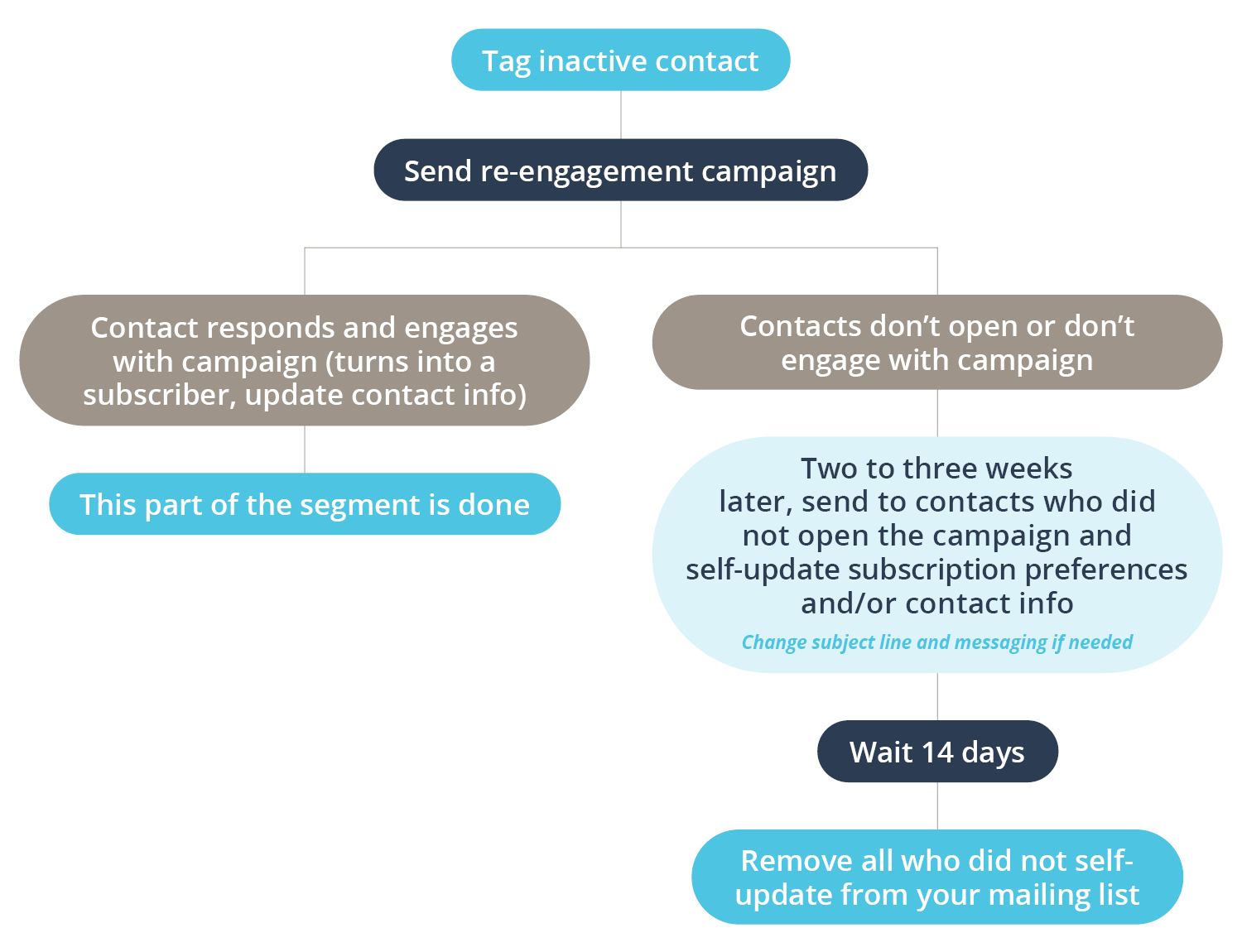Win Back Subscribers Through Re-Engagement
By Jacqueline Madarang
June 22, 2021 | 3 minutes
Technology Management Communications Software and Platforms Customer Relationship Management (CRM) Content Type Article Additional Options Content Level: Essential
Client Services
Say you have 2.5 million subscribers to your firm’s e-communication platform. How many of those are engaged and active? According to HubSpot, companies lose about 25% of their mailing list subscribers each year. In the case of this example, that’s 625,000 subscribers annually.
Inactive subscribers who no longer engage with your content contribute to mailing list decay. As that happens, you run a greater risk of damaging your sender reputation and email deliverability rates. This is why maximum mailing list retention should be a priority.
A re-engagement campaign can help win contacts back to interact with your content. As a bonus, your contacts can also update their information, making your CRM records more complete and up to date.
What Is a Re-engagement Campaign?
A re-engagement campaign, broadly defined, involves reaching out to your individual subscribers, and asking them to commit to (a) remaining a subscriber of your content and (b) selecting content that is specific to their interests. If done correctly, a re-engagement campaign can help:
- Increase engagement levels from subscribers;
- Re-engage inactive subscribers;
- Reinforce brand reputation;
- Improve email deliverability; and
- Increase open-to-click rates of your email campaigns.
Inactive subscribers who no longer engage with your content contribute to mailing list decay. As that happens, you run a greater risk of damaging your sender reputation and email deliverability rates.

Getting Started
At Blank Rome, we launched a re-engagement campaign strategy targeting various contacts:
- Segment 1: Contacts who had engaged with our content in the last eight months;
- Segment 2: Contacts who had not engaged with our content in the last eight months; and
- Segment 3: Substantial clients who were not subscribed to any of our mailing lists.
Here are some best practices we followed:
- Segment your list further: Analyze the engagement level of each recipient and consider various activities such as, whether they are opening and clicking, opening but not clicking and/or RSVP’ing to an event.
- Personalize your copy: Make sure the message is clear and that it speaks directly to your contacts. We tailored each message to the expectations of each segment. We also sent our campaigns during the holidays and included related messaging as part of those communications. In addition, we personalized our campaigns to be sent directly from our chief business and marketing officer versus a generic marketing mailbox. Each subject line was thoughtfully crafted with the goal that the recipients would open the campaign upon receipt.
- Offer another way to stay in touch: Allow contacts to control their information and subscription preferences. We linked to our preference manager, where all contacts could update subscription preferences and contact information, including their preferred mailing address.
- Offer a value-add: Are there links to recorded webinars that may interest your subscribers? We provided links to our thought leadership content in addition to other pieces we thought our contacts would find useful.
- Think of your design: Keep your design simple and your call-to-action (CTA) clear. You’re trying to get them to re-engage. Think of your audience when designing your campaign.
- Don’t forget to add the visible “unsubscribe” option: For compliance purposes, you’ll need to have this visible for your subscribers.
Below is a visual flowchart as an example of a re-engagement campaign to follow.

Our Success Story
We sent our campaigns in December 2020, using the opportunity to reach out to our contacts. We converted 3% of our substantial clients to subscribers and updated more than 50% of our mailing lists with complete contact information.
Having completed this campaign, we better understand our clients’ needs digitally and we are equipped to do so by paying attention to what topics they are truly interested in, as well as their level of engagement. In addition, it helped with our CRM data quality, improving email deliverability and client reach.